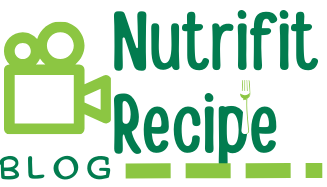Maintaining a healthy weight is a priority for many, and nutrition plays a critical role in achieving it. While exercise is essential, the foods we consume directly impact our weight management efforts. Enter the realm of weight loss foods — these potent, nutrient-rich options can aid in burning fat and keeping you feeling full longer. This blog post dives deep into the world of weight loss foods, providing insights, practical tips, and advice to help health-conscious individuals, fitness enthusiasts, and weight watchers make informed dietary choices. Ready to discover the foods that could transform your diet? Let’s dig in!
Understanding Weight Loss Foods
Weight loss foods are not magical items that instantly shed pounds, but they are powerful allies in your weight management arsenal. These foods are characterized by their ability to support fat burning and satiety. Typically, they are low in calories but high in essential nutrients, making them excellent for filling you up without adding inches to your waistline.
These foods help burn fat by increasing your metabolism — the rate at which your body converts food into energy. Foods rich in protein, fiber, and healthy fats tend to require more energy to digest, thus boosting your metabolism. Additionally, they promote satiety, reducing the likelihood of overeating by keeping you full for longer durations. Incorporating these foods into your daily diet can contribute significantly to your weight loss goals.
Top Weight Loss Foods to Include in Your Diet
Several nutrient-dense foods stand out as weight loss champions. Let’s explore some of these superfoods and the benefits they offer:
Leafy Greens
Leafy greens like kale, spinach, and Swiss chard are low in calories and carbohydrates but high in fiber. They provide essential vitamins and minerals while helping you feel full. These greens are also packed with antioxidants, promoting overall health.
Lean Proteins
Foods like chicken breast, turkey, and tofu are excellent sources of lean protein. Protein has a higher thermic effect than carbs or fats, meaning your body burns more calories breaking it down. Additionally, protein helps preserve muscle mass, which is crucial for maintaining a healthy metabolism.
Whole Grains
Whole grains such as quinoa, brown rice, and oats are rich in fiber, aiding digestion and promoting satiety. They help regulate blood sugar levels, preventing insulin spikes that can lead to increased fat storage. Their complex carbohydrates provide sustained energy, making them perfect for weight management.
Berries
Berries, including blueberries, strawberries, and raspberries, are high in fiber and antioxidants. These sweet treats satisfy sugar cravings while delivering vital nutrients. Their high water content also contributes to fullness, making them an ideal snack for weight watchers.
Incorporating Weight Loss Foods into Your Meals
It’s one thing to know which foods support weight loss, but how do you seamlessly integrate them into your daily meals? Here are some practical tips to help get you started:
Breakfast Boost
Start your day with a bowl of oatmeal topped with fresh berries and a dollop of Greek yogurt. This meal provides a healthy dose of fiber and protein, setting the tone for a day filled with balanced nutrition.
Lunch Lift
For lunch, consider a hearty salad with leafy greens, grilled chicken or tofu, quinoa, and an array of colorful vegetables. Top it off with a light vinaigrette to add flavor without unnecessary calories.
Snack Smart
Keep snacks both satisfying and healthy by opting for a small handful of almonds or apple slices with almond butter. These choices deliver protein and healthy fats, keeping hunger at bay between meals.
Dinner Delight
For dinner, enjoy a lean protein like grilled salmon accompanied by a side of steamed broccoli and sweet potato. This balanced meal offers a combination of protein, fiber, and healthy fats to round out your day.
The Science Behind Weight Loss Foods
The effectiveness of weight loss foods is backed by science. These foods work through various metabolic and physiological mechanisms to support weight management.
Metabolism Boosters
Certain foods, like chili peppers and green tea, contain compounds that can boost metabolism. Capsaicin, found in chili peppers, helps increase energy expenditure, while catechins in green tea enhance fat oxidation.
Appetite Suppressants
Foods high in fiber and protein tend to act as natural appetite suppressants. They slow down the digestive process, leading to prolonged feelings of fullness and reduced calorie intake.
Nutrient Density
Weight loss foods are often nutrient-dense, meaning they provide a high level of nutrients for relatively few calories. This allows you to meet your nutritional needs without overconsuming calories, supporting overall health and weight loss.
Avoiding Pitfalls and Maximizing Benefits
While incorporating weight loss foods into your diet is beneficial, there are potential pitfalls to avoid:
Overeating Healthy Foods
Even nutrient-dense foods can contribute to weight gain if consumed in excess. Be mindful of portion sizes to ensure you’re staying within your calorie goals.
Ignoring Balance
Weight loss foods should be part of a balanced diet. Relying solely on them can lead to nutrient imbalances. Aim for a varied diet that includes a wide range of food groups.
Inconsistent Habits
Consistency is key to achieving weight loss success. Ensure you’re regularly incorporating these foods into your meals and maintaining a balanced lifestyle for long-term results.
Conclusion
Weight loss foods are an invaluable part of a healthy, balanced diet. By understanding their benefits and incorporating them into your meals, you can support your weight loss goals effectively. Remember, informed dietary choices are the foundation of lasting health. Explore more about nutrition and weight management, and share this post with others to spread the knowledge!




